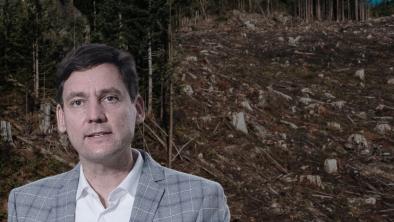Outrage greets road-only solutions for Malahat
Victoria Times Colonist

Public transit should get more attention, groups say.
Let the backlash begin.
You just knew that when a government-funded study suggested the only real solutions to the Malahat’s traffic troubles were A) a wider highway, B) a wider, straighter highway, or C) another highway, with all the options involving punching holes in parkland, that outrage would soon follow.
Both the Western Canada Wilderness Committee and the Island Corridor Foundation, comprising local politicians along the E&N rail line, are taking shots at the Transportation Ministry’s just-released Malahat Corridor Study, calling it biased toward blacktop.
Boiled down, the study says the Malahat is neither terribly dangerous nor terribly busy, but when crashes do close the highway it’s a pain in the butt for motorists trapped for long periods with nowhere to go.
The study dismisses options such as bridges, trains, ferries and way-out-in-the-bush highways as either too expensive, moving too few people, or doing nothing to provide an alternative when the Malahat is blocked.
What’s left is a short list that includes express bus service between the Cowichan Valley and Victoria (which everybody seems to want), plus four highway-based options. Two of the four would involve widening and/or straightening the existing highway, which might reduce accidents, but still wouldn’t provide an alternative route. The other two choices would see new stretches of highway built - both through existing parks.
“There’s no way that we’re going to let a highway go through one of the key valleys that we saved,” the Wilderness Committee’s Ken Wu said yesterday. He was talking of the so-called Niagara Main option, which would see a new highway built from the Malahat summit to the south end of Goldstream Park. It would run through Sooke Hills Wilderness Regional Park Reserve - the Vimy Ridge of the local environmental community, which won protection for the area in a titanic battle in the 1990s.
Likewise, the other new-highway option includes another road through Goldstream Park, which would leave the remaining forest incapable of supporting large wildlife, says Wu. Even plans to tinker with the existing highway would mean taking a whack of ancient trees out of Goldstream, and would perhaps threaten the park’s famous salmon runs.
Both the wilderness committee and ICF figure the study buries the environmental consequences and is too quick to dismiss alternatives to road-building.
“Widening highways leads to more cars on the road and greater suburban sprawl, and ultimately more traffic congestion,” Wu said. “It’s like buying someone who has a tendency to overeat a set of giant pants in anticipation that they’ll gain weight at some later date.”
The ICF, which advocates greater use of the rail corridor, also said the study ignores the impact of funnelling more and more cars onto the local road networks of the south Island, ultimately threatening the sustainability of communities.
This all could, at least in the short term, be much ado about nothing. Since the study concludes that no action is urgently required, we shouldn’t expect the government to run out and drop $400 million on a new highway tomorrow. Cynics suggest the whole exercise was never anything more than a means of keeping the heat off politicians.
Still, it’s obvious that the government is going to have to act sooner or later. The highway may not have reached capacity yet (save for Friday afternoons, when traffic flees Victoria like there’s been an anthrax outbreak at Douglas and Yates) but we are steadily marching (or driving) to the point where, if nothing is done, the highway won?t be able handle demand in a few years.
The question remains: Bigger highways, more buses, or the train?


